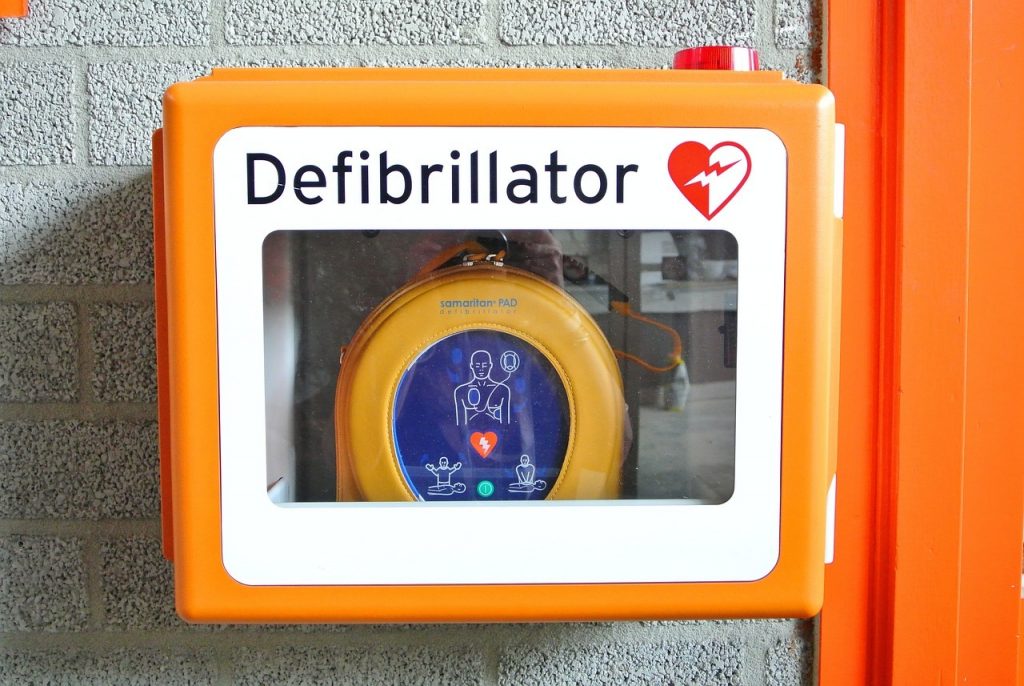Community Defibrillators

Defibrillators are devices that carry an electrical charge which can be used safely to correct potentially fatal heart rhythms. We see easily portable ones around our communities these days for example in old Telephone Boxes. They are checked and kept ready charged, often by appointees from our parish councils. Most potentially fatal heart rhythms are caused by Coronary Thromboses often called Heart attacks. To use Defibrillators successfully a knowledge of Cardio Pulmonary Resuscitation [CPR] is essential.
Quite a few of us have been trained in CPR but things change. The procedures around it and the use of Defibrillators in the community need to be widely understood.
We all ideally need training or revision of our practical CPR knowledge (courses are available eg through the Community Heartbeat Trust)
I’ll take you all through the sequence of dealing with a collapsed person in the community at home or out and about.
What to do
Are they unconscious, unresponsive and don’t seem to be breathing properly? Their heart may have stopped pumping effectively. If so, don’t hesitate, start CPR, having put them on their back on a firm surface, usually the floor. Adjust neck position to lift jaw and open airway but don’t place your hand in the mouth.
NOTE mouth to mouth resuscitation is no longer recommended.
Commence chest compressions by the approved technique. DON’T STOP THESE.
If on your own call 999 ASAP. Give relevant details and location.
(What 3 words, smart phone app can be valuable here)
If with another person get them to call 999.
The operator will send an emergency ambulance and often a First Responder trained in CPR. Note the 7 MINUTE TARGET IS DIFFICULT IN RURAL SITUATIONS hence the need for community back up..
Accessing a defibrillator
The operator will talk you through what to do and will tell you to send your friend for the nearest Defibrillator. They have a list of all locations and will tell them the access code.
An ambulance or first responder may have arrived but you may need to prepare to use this. The portable defibrillator should be obviously charged shown by a green light. When it is opened it will tell you exactly what to do. You need to expose the chest and place the pads with attached leads at the advised location. The defibrillator will now read the heart waves and tell you what to do to shock the heart back to a more normal rhythm.
You may see signs of life but if not resume CPR.
The voice will continue to tell you what to do, probably repeat shock.
The defibrillator won’t let you do this if the heart is beating normally.
If there are no signs of life like breathing normally or regaining consciousness, continue CPR until help arrives.
By following these procedures LIVES WILL BE SAVED.
DH




 Kibworth Ladies Choir
Kibworth Ladies Choir

